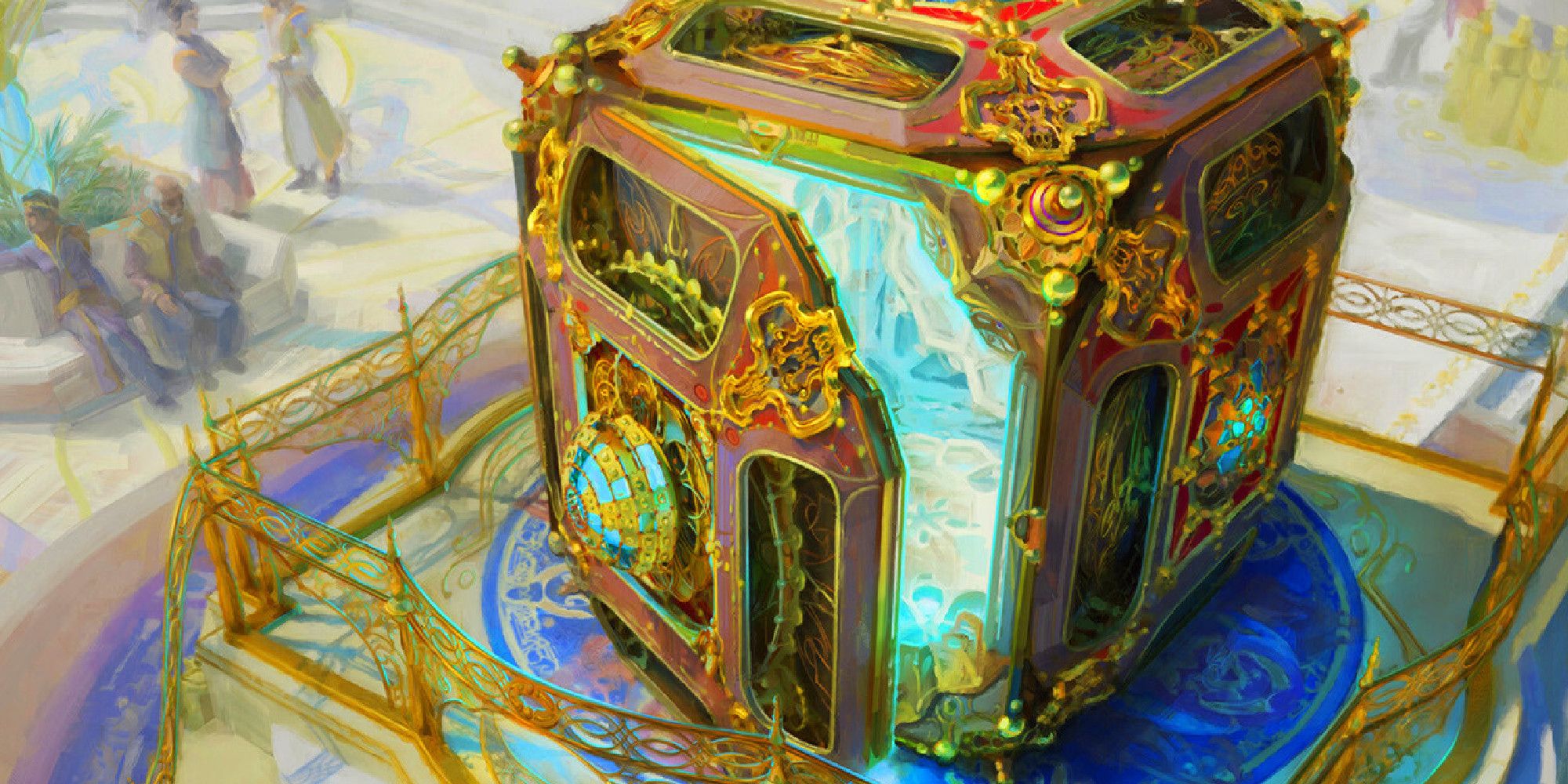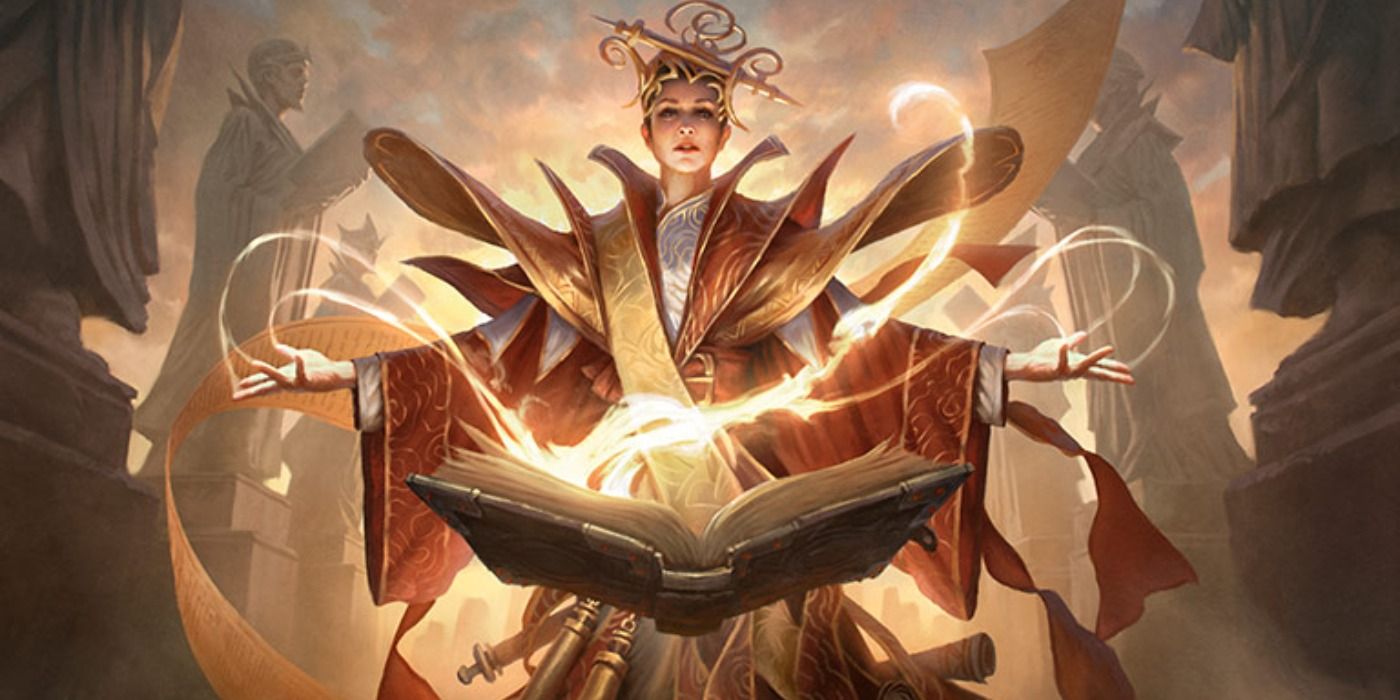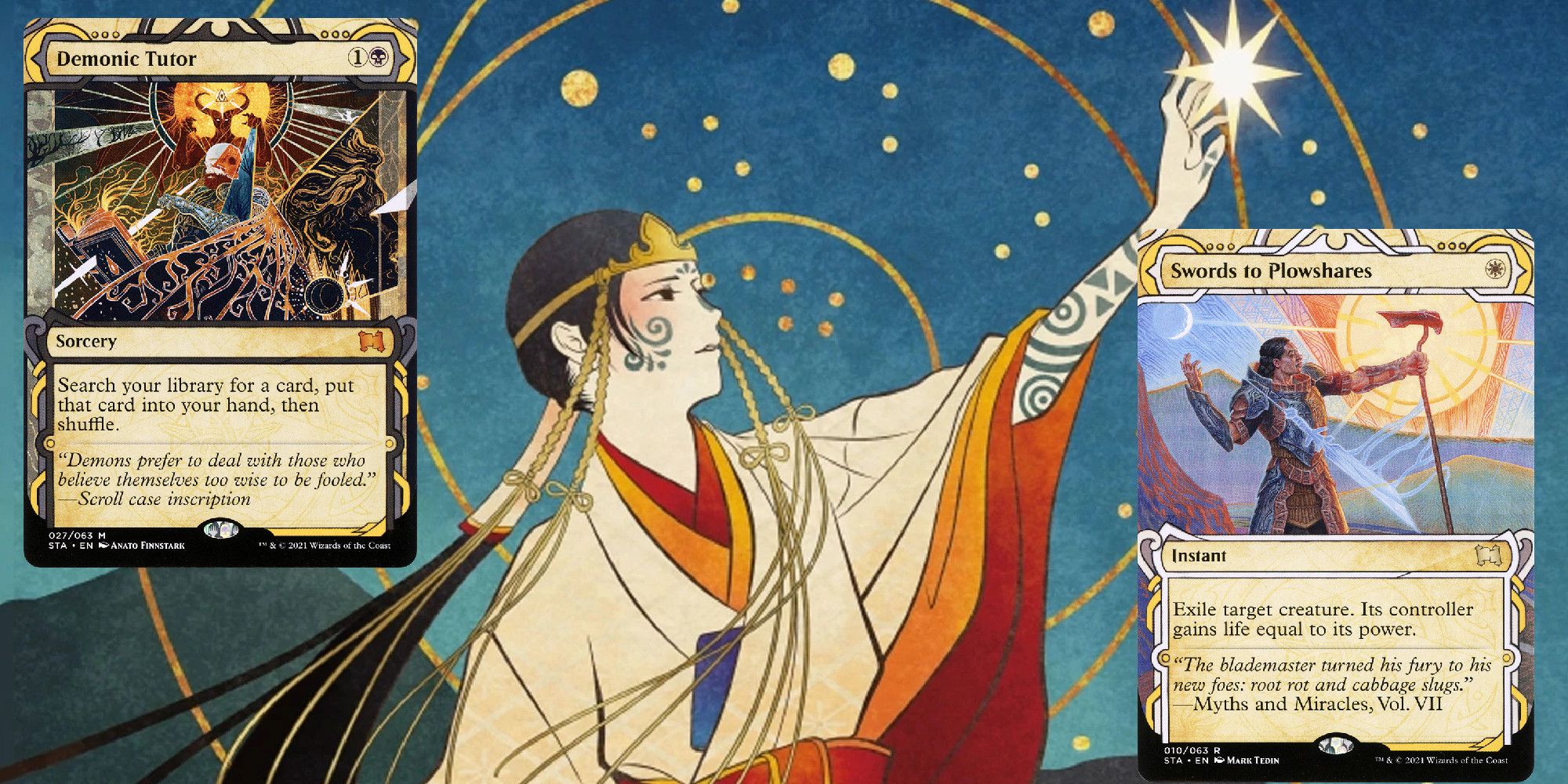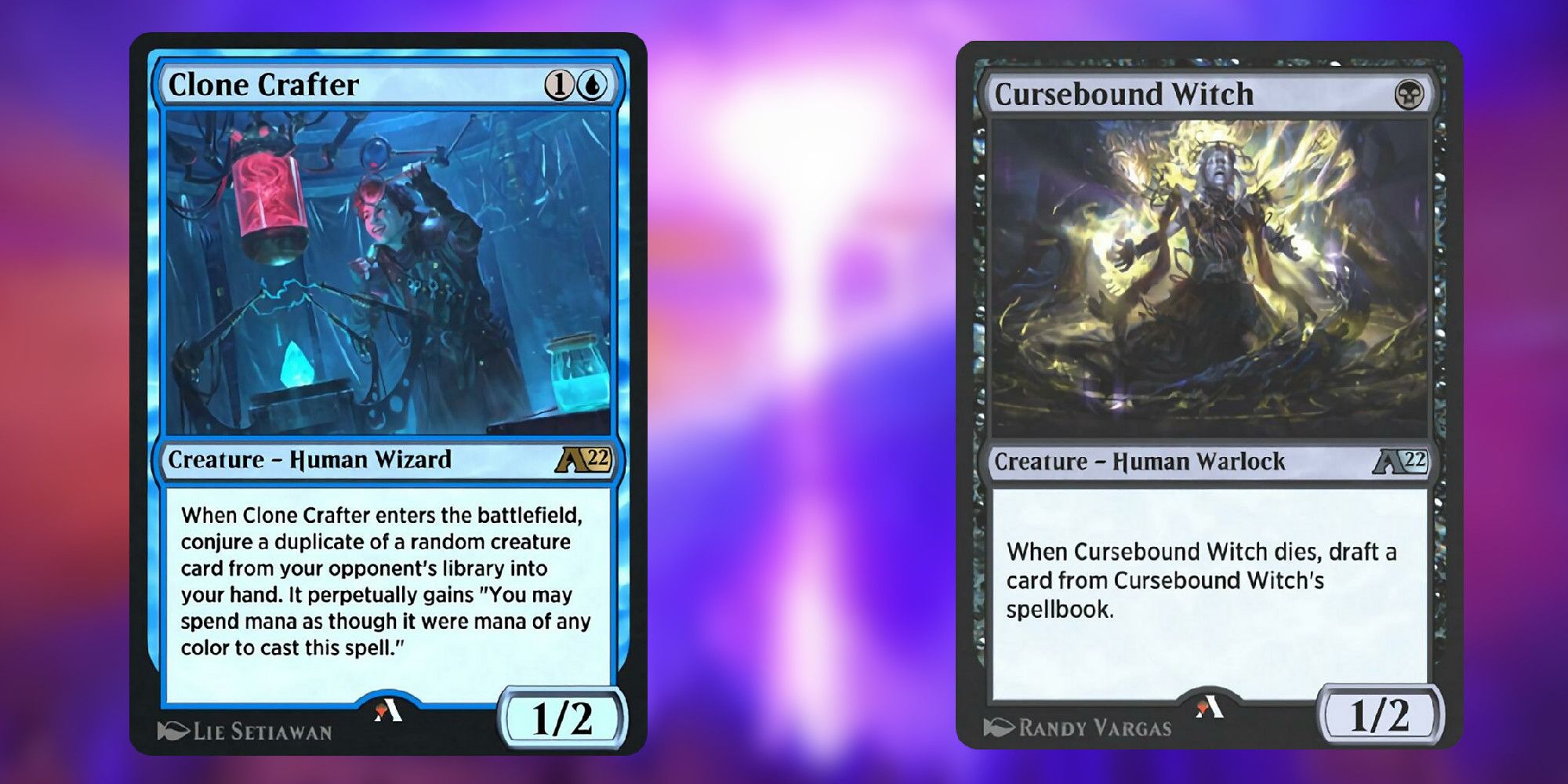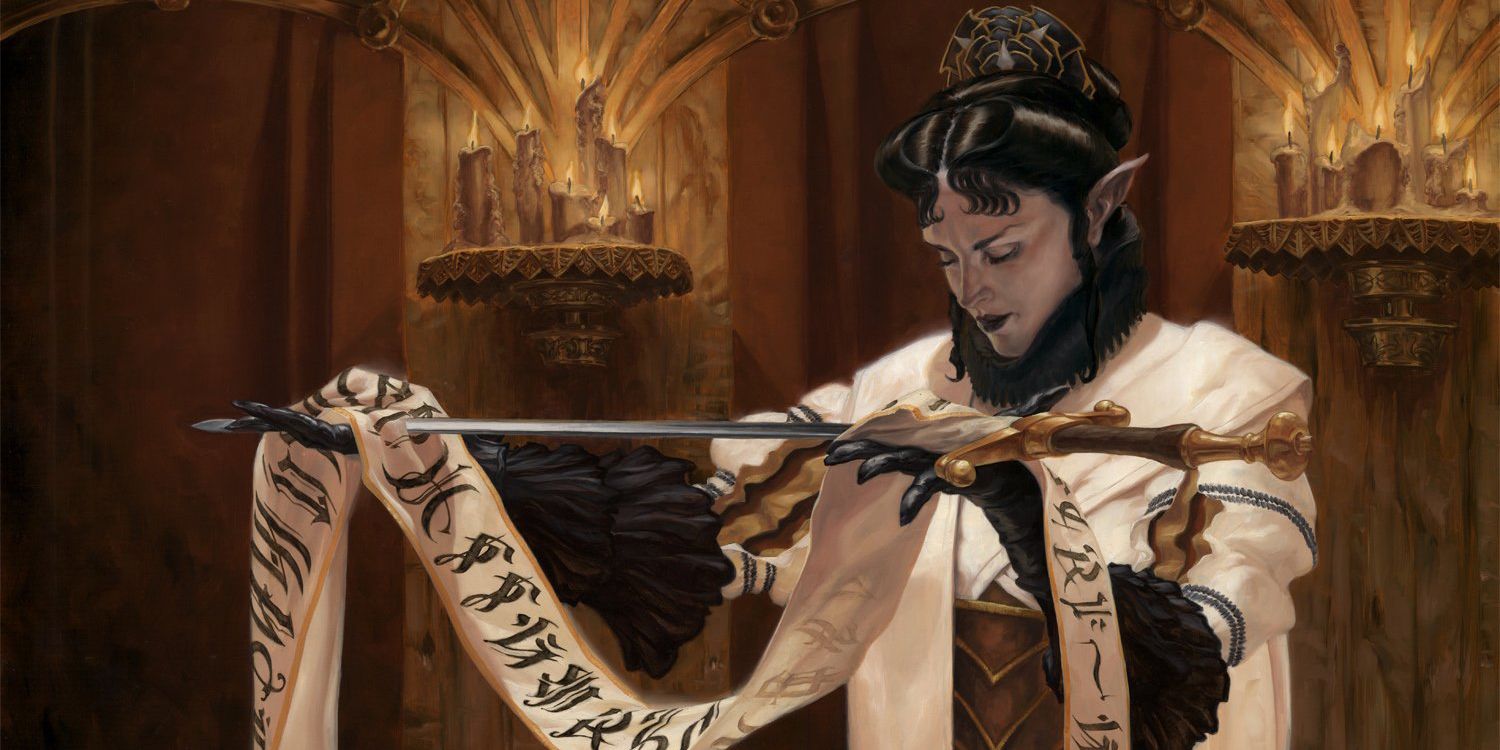At the end of most sets’ runtime on Magic: The Gathering Arena, drafts begin to get stale, so during the dry months of Magic content, Wizards of the Coast often adds in the Arena Cube to vary up the draft experience. It’s well liked among the community and is probably the best way to play Arena at the moment. When every archetype feels like it’s been played to death and there’s a lack of choice once the best cards have been scouted out, Arena Cube is a great way to spice things up again.
The Arena Cube will be running until January 21, around the time that Kamigawa: Neon Dynasty will be releasing. Players who are tired of Crimson Vow and are looking for something to do in the Arena client might find that drafting the cube is the most exciting format to play. Even for those who like Constructed and Magic's 60-card Standard format, the Arena Cube draft is a great way to cool down after the Arena Open and play some more casual games of Magic.
Magic cubes don’t get talked about often enough because they take time and money to build in paper, but both Magic Online and Magic Arena have bustling communities who love when the events roll around. Given the digital versions are much less expensive and don’t require eight friends to come together in person to play, the online versions are much more desirable and are fun to boot. The other formats on Magic Arena are currently in a state of stasis and won’t rotate until after the cyberpunk return to Magic's Kamigawa set comes out, so Cube is a great way to vary up the Arena play experience and is definitely a contender for the best event Wizards of the Coast runs on the platform.
Magic’s Cube Format Is Powerful & Fun To Draft
Many Magic players are most likely familiar with the Draft format as a concept – each player takes a 15 card booster pack, takes one card, and passes it around the table until their pack is gone. The format not only tests a players skill at playing games, it also gives players a more even footing to test their deckbuilding skills with. What Cube adds is a specialized and curated card set of 360 cards to play and draft with rather than the power imbalances between commons, uncommons, and sometimes banned Magic rares like Uro in Standard sets.
With a more powerful format, stronger, more streamlined decks are possible. Drafts normally force players to play with commons and uncommons to introduce players to the format and more easily balance standard, but Cubes aren’t held back by either stipulation. The Arena Cube presents a second chance for players build decks with rares that seemed powerful in draft or constructed, but never really found their footing. Lands are much more available than usual, meaning that tri-colored and even four color decks are possible.
All Of Strixhaven’s Mystical Archives Are Legal In Magic’s Arena Cube
Magic: The Gathering Arena features a strange card pool with legal cards from throughout Magic’s history, but not every powerful card is legal in every format. Strixhaven’s Mystical Archives, for example, never made it into Standard, and some of the most classic powerful Magic cards like Demonic Tutor and Channel were never legal in Historic either. There are only two ways to play with the most powerful cards on the Arena client, and that’s Direct Challenge and Arena Cube.
Cards like Demonic Tutor, Swords to Plowshares, and Brainstorm are all powerful additions to Legacy-level cubes and the added efficiency makes playing them with Standard and Historic-legal cards stand out even more. These cards are often some of the first cards people should pick and they are important to making a deck that beats out other decks in the cube. The cards aren't too powerful or complex, meaning that new players won’t be overwhelmed, but many of Magic’s old instants and sorceries have stood the test of time regardless, and will often help drafters win games outright.
Magic Arena’s New Alchemy Cards Feel Right At Home In Cube
Arena’s Hearthstone-like Alchemy cards “break the rules” of Magic similarly to one of the the strangest and best draft formats, Conspiracy. This special supplementary set had draft-specific and multiplayer-only cards, allowing players to augment how certain cards in their decks work for the entirety of the match. Cards like Cursebound Witch and Clone Crafter add a lot to the Arena Cube, presenting new never-before draftable cards to put in decks. It makes Arena's draft a wholly unique experience from Vintage and Legacy cube, much like Conspiracy did, but also keeps it a competitive format.
Conjuring cards and seeking add a different mechanical strategy to many of the games and the cards from the digital-only MTG Alchemy format open up many options to players. For example, Clone Crafter conjures a duplicate of a random creature in an opponent’s library, meaning that it can be exiled and returned to the battlefield, returned to its conjurer’s hand, and used in decks that don’t usually get to play those colors. Despite how strange this all is, the games still feel like Magic. The Arena-only cards add an extra puzzle to figure out when it comes to deckbuilding that not even most people familiar with the cube will be used to.
Arena Cube’s Balance Is (Arguably) The Best Of Magic Arena’s Formats
Standard and Alchemy have both had a tumultuous history recently, with Alchemy’s Mono-Red Dragons list being most likely broken enough to face a rebalancing and Standard still having problems with Esika’s Chariot and Goldspan Dragon. Draft has been particularly bomb-focused in the vampire-themed Innistrad: Crimson Vow, and Historic has been in a fairly good spot but is a bit hard to buy into. Cube only runs for a short while, but since it’s been updated and tweaked over the years, it’s been balanced much better than the rotating formats on Magic Arena.
There are multiple different styles of decks to draft and each one is fairly balanced against each other. There are still tiers of decks – Mono-red, blue control, and four-color all seem to be at the top, but many of the decks surrounding these are still competitive. Each color has great cards that can be used to build a cohesive strategy, leading to fair and balanced gameplay that still feels powerful.
The event isn’t that cheap given the fact that people don’t actually get to keep their cards, but until Magic Arena supports Pioneer, it’s definitely the most unique experience that the client has to offer. It’s not so competitive that players can’t get some gold back for their entry and since it’s unranked, there’s not as much of a reason to grind it into the ground. Usually, completing all of the daily quests for two days will earn an entry, and since every quest can be completed while playing the Cube, it’s possible to run it back at least twice in a few play sessions.
For players good enough at draft, going after 5 wins and 3 losses will net them enough to play again. For casual players, it’s still a great way to play powered Magic with enough at stake to make it entertaining. Arena has a lot to offer players, and given the cost of many of the best decks online and from Magic's expensive Secret Lairs in paper, the Cube is the best way to play with many of the best cards in a fair way. Even if the event is almost over, Magic: The Gathering Arena's Cube is well worth checking out.

